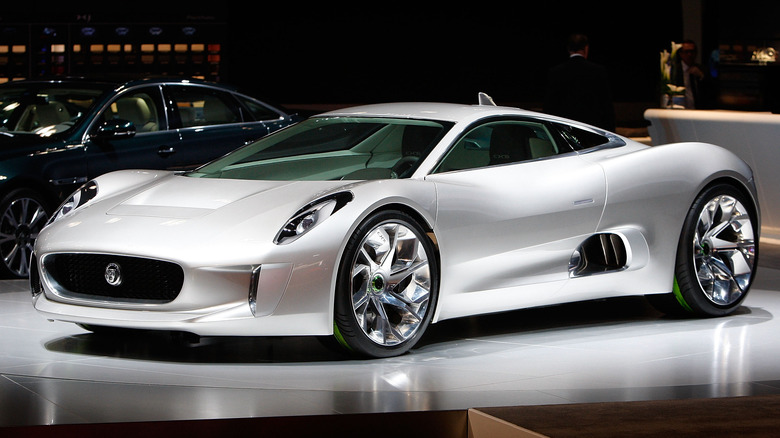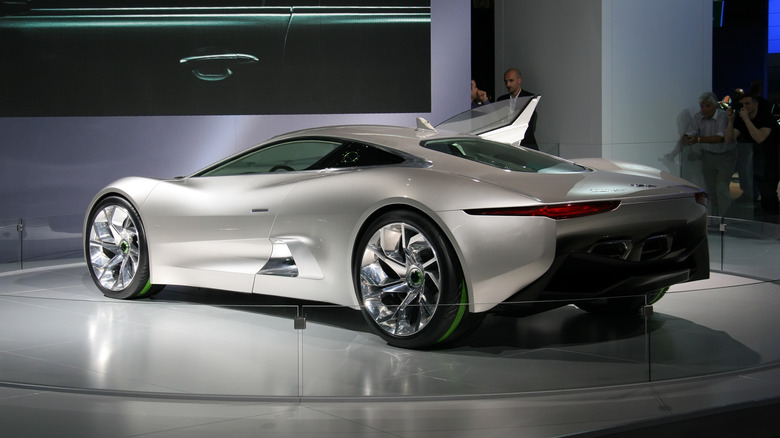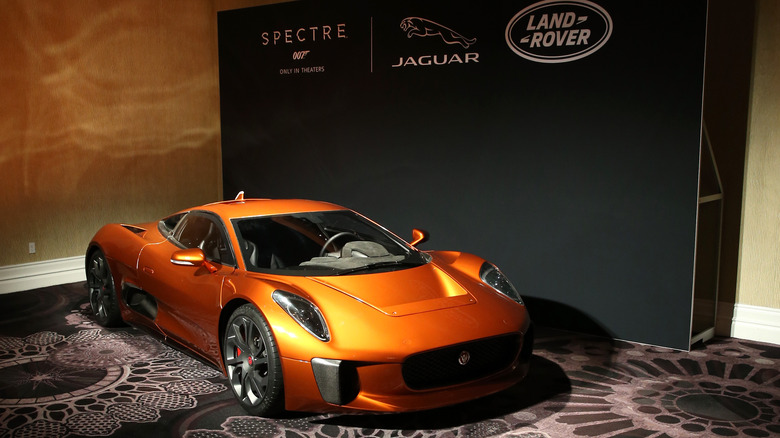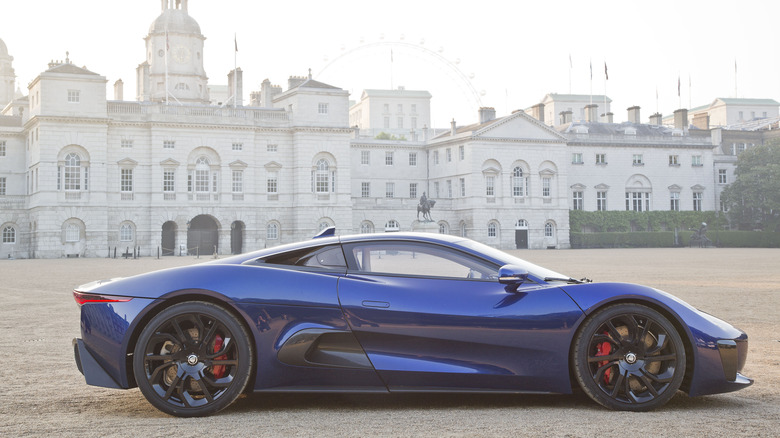Why Jaguar Couldn't Sell Its F1-Inspired Supercar
If you read about the Jaguar C-X75 in 2022, you would be forgiven for thinking you had stumbled on a glitch in the matrix. Enter the right Google searches, take direction from the YouTube algorithm, and you arrive in a parallel universe where Jaguar made a hybrid hypercar two years before Ferrari, Porsche and McLaren.
What's even more impressive, is how its timeline claims the plucky Brits beat Mercedes-AMG in developing a road car with a Formula One engine by almost a decade. Indeed, search SlashGear's database and you'll find tales from a decade ago, raving about a $1 million Jaguar powered by an engine with a turbocharger, a supercharger and two electric motors — a sleek supercar penned by Ian Callum that would go on to appear in the James Bond movie "Spectre."
And yet, in this strange world where Coventry-based Jaguar conquered the supercar titans from Maranello to Stuttgart, the C-X75 never made it to mass production. Just five prototypes were built, plus a handful of lookalike stunt cars to chase 007's Aston Martin through the streets of Rome.
The question on your mind will surely be, why? Why didn't Jaguar put the C-X75 into production?
What could have been
Before we deal with the why, it's worth digging further into what the C-X75 was, and what it could have been.
Revealed as a concept at the 2010 Paris Motor Show, the C-X75 was meant as a successor to the Jaguar XJ220 supercar of the 90s, with a design inspired by the earlier XJ13 race car (itself a stillborn, never to compete). The C-X75 was always intended to be a hybrid, but at first the powertrain comprised an internal combustion engine and micro-gas turbines — also known as jet engines (via Jaguar).
In a bid to make the car a reality, this idea was quickly scrapped in favor of a more conventional hybrid system. Bob Joyce, group engineering director of Jaguar Land Rover, said in May 2011, when the C-X75 was confirmed for production: "This [hybrid system] will make the Jaguar C-X75 a bona fide hybrid supercar capable of silent electric running with an extensive EV range in excess of 50 km."
Jaguar also predicted a sub-three second 0-60 mph time, 100 mph in under six seconds, a top speed in excess of 200 mph and a target emissions figure of less than 89g/km CO2. Rob Atkin, vehicle and program manager, said at the time, "We needed to achieve the performance of a [Bugatti] Veyron, the range of a [Chevrolet] Volt and the CO2 of a [Toyota] Prius, and package it all inside the beautiful C-X75."
Paul Newsome, programme director, described it as "the most technically advanced road car ever conceived".
An F1 engine for the road
To be priced between £700,000 and £900,000 plus tax, and limited to 250 examples, the all-wheel-drive C-X75 used a turbocharged, small-capacity engine with electrical assistance (via Jaguar) from a compact battery three years before the start of the Formula One hybrid era. It also aimed to put such an engine on the road a decade before the delayed Mercedes-AMG One finally arrived this year.
Built in collaboration with Williams Advanced Engineering, a division of the F1 team, the C-X75's engine was just 1.6 liters in capacity, with four cylinders, a turbocharger and a supercharger. It revved to 10,000 rpm and produced about 500 horsepower, which was then boosted by 390 horsepower of electric assistance from two motors fed by a 19 kWh battery. Total torque was a claimed 1,000 Nm and the car was due to arrive with customers between 2013 and 2015.
By 2013, the C-X75 turned out even better than Jaguar had expected. The top speed was by then a theoretical 220 mph and the electric range was a claimed 60 km (37 miles), while maximum downforce was over 200 kg at 200 mph (via Jaguar).
Why the C-X75 failed
Despite having a car seemingly ready to take on the newly-coined "Holy Trinity" of hybrid hypercars from Ferrari, McLaren, and Porsche, the C-X75 was killed.
Brand director Adrian Hallmark said in December 2012, "We feel we could make the car work, but looking at the global austerity measures in place now, it seems the wrong time to launch an £800,000 to £1m supercar." He added that around 100 customers had expressed interest in the car, but production would not extend beyond five prototypes.
In April that year, the U.K. economy entered a recession for the second time in three years, shrinking due to a sharp fall in construction output.
If only Jaguar had held its nerve. The sold-out 'Holy Trinity' cars have all appreciated over their lifetimes, according to sales data about the Porsche 918, LaFerrari and McLaren P1. Meanwhile, plug-in hybrid popularity grew, and although the C-X75 enjoyed a resurrection in "Spectre," not even the glamor of a James Bond movie could convince Jaguar to change its mind.
Today, four of the seven V8-powered movie stunt cars survive and, although not hybrid or street legal, occasionally come up for sale. This one, repainted blue, sold for an unknown fee in 2018, while chassis 001 failed to sell at auction in 2019 (estimated at $800,000 to $1.2 million), and chassis 007 is for sale now, priced in the UK at £2m (or $2.25 million).



